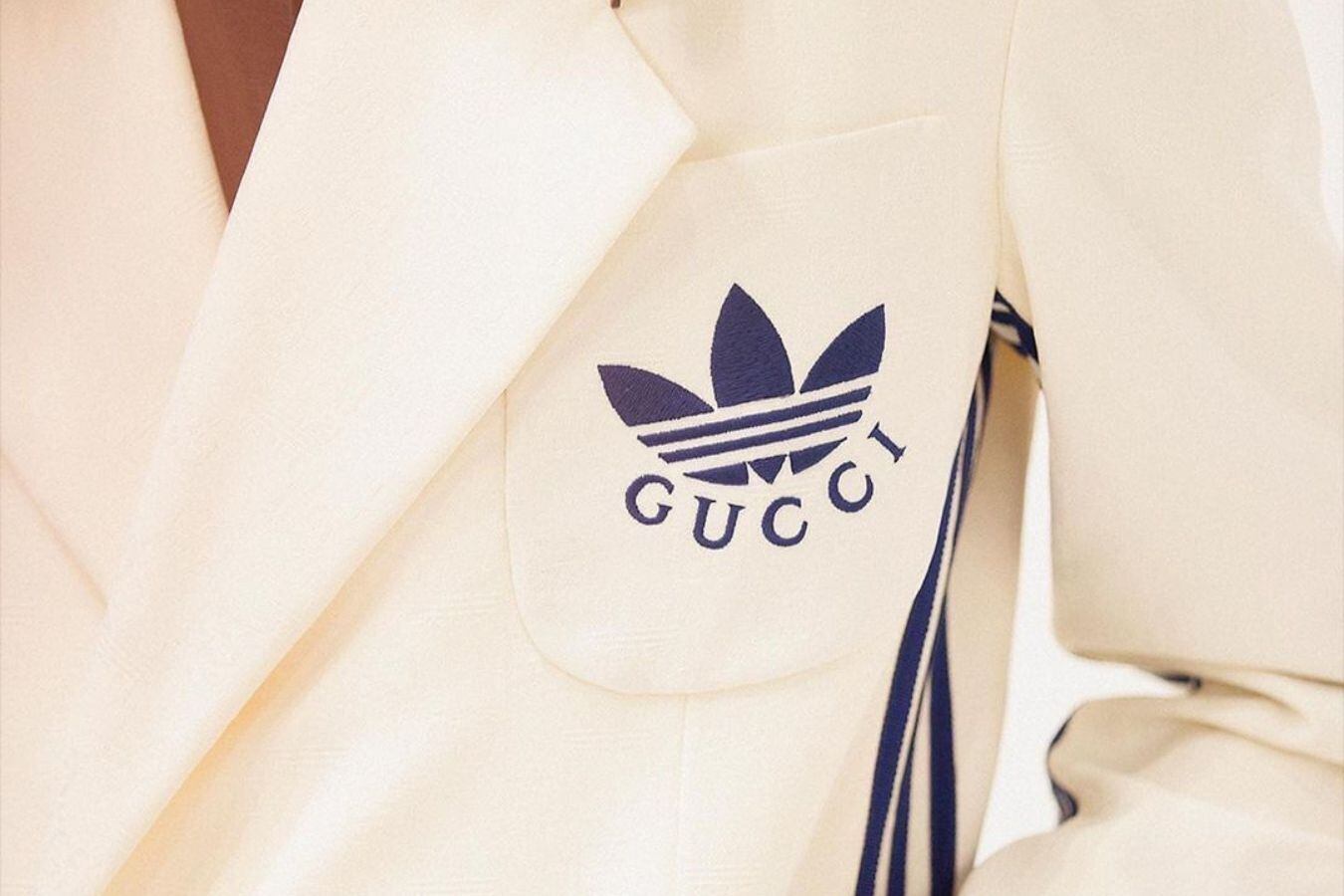What Adidas X Gucci Means for Gucci — and Adidas
A Much-Hyped Collaboration
- Items from Gucci’s collaboration with Adidas, first announced in February, go on sale June 7
- For Adidas, the collection comes on the heels of another luxury partnership with Balenciaga
- Gucci has reported uneven growth in recent quarters, even as rivals have found success with timeless, ultra-expensive merchandise
Gucci and Adidas have had months to build hype for the collection that goes on sale this week, from the first glimpse on the runway in Milan in February to the full lookbook revealed last month to an odd episode in May where Chinese social media users were seemingly outraged by the existence of a non-waterproof umbrella with a listed price of 11,100 yuan ($1,600). The umbrella will almost certainly sell briskly nonetheless, along with Gucci’s $850 spin on the Gazelle sneakers and other items that mix and remix the two brands’ logos.
Adidas needs luxury collaborations like this one, and a recent team-up with Balenciaga, to close the hype gap with Nike, which has proven far more adept at generating brand heat over the last couple of years. All that buzz has real-world consequences; Nike’s stock is up about 15 percent since June 2020, Adidas’ is down 30 percent.
For Gucci, an attention-grabbing collaboration featuring products with mass appeal at luxury prices is par for the course. The question is whether Adidas X Gucci represents the latest chapter in that particular playbook or the start of a new one. Gucci remains one of the most talked-about luxury brands (its Instagram post announcing the Adidas partnership has over 1.2 million likes). But its sales haven’t grown at the same pace as rivals that have better balanced conversation-driving moments with clothes and accessories that luxury consumers view as timeless investments.
The Bottom Line: Kering is holding an investor day this week, where it’s expected to delve further into its strategy for Gucci, as well as Saint Laurent, which has found enormous success with a less hype-driven approach to luxury.
-Robert Williams contributed to this item
Change Is Coming, Whether Fashion Wants It or Not
- The Global Fashion Summit, formerly the Copenhagen Fashion Summit, runs June 7-8
- It will be the first in-person edition of fashion’s biggest sustainability event since the pandemic
- The industry faces the prospect of tough new environmental and labour regulations worldwide
For its first in-person gathering since the pandemic, the event formerly known as the Copenhagen Fashion Summit has a new name to emphasise the global nature of the problems its attendees hope to solve. There’s plenty to chew over, from exciting new materials to progress toward circular fashion and backsliding in the treatment of garment workers. There will be plenty of calls to action, but looming over the proceedings is the growing likelihood that fashion will be forced to clean up its act, whether it wants to or not. From the EU to the UK to the US, lawmakers are pushing rules that would address fashion’s contributions to climate change and the checkered history of labour relations. Members of the New York State legislature and the European Commission who are active on these issues are among the speakers.
The Bottom Line: The fashion industry likes to say that it can address its own ills, pointing to investment in new technologies and retail concepts such as resale as evidence. But progress has been uneven, and grindingly slow, helping to explain the momentum behind regulatory fixes.
Consumer Confidence
- The US government releases inflation data for May on June 10
- Prices are rising at their fastest pace in decades, with gasoline, food and other staples stretching budgets
- Some retailers that cater to low-income consumers have suffered, while sales remain strong at many higher-priced brands
How is the American consumer feeling these days? Economists are warning about a possible recession, and gasoline prices are at a record high. Yet in surveys, most people say they’re feeling more optimistic about their personal finances than the economy as a whole. And most importantly for the fashion industry, they continue to shop. They’re just being more selective about where. Last year, when government stimulus checks were arriving in mailboxes each month, brands and retailers of all sorts benefitted. Today, high inflation means paychecks don’t go as far, especially for low-income consumers. That helps explain why sales have suffered at Walmart and Target, not to mention Gap Inc.’s Old Navy, while higher-priced retailers, from Ralph Lauren to Nordstrom, seem to be doing just fine.
The Bottom Line: Last quarter’s results may have come as a relief to executives and investors, but it’s unclear how long even better-off consumers can brush off economic turbulence. Expect volatility ahead.
The Week Ahead wants to hear from you! Send tips, suggestions, complaints and compliments to [email protected].
Join BoF Professional to get access to the exclusive insight and analysis that keeps you ahead of the competition. Subscribe to BoF Professional here.

